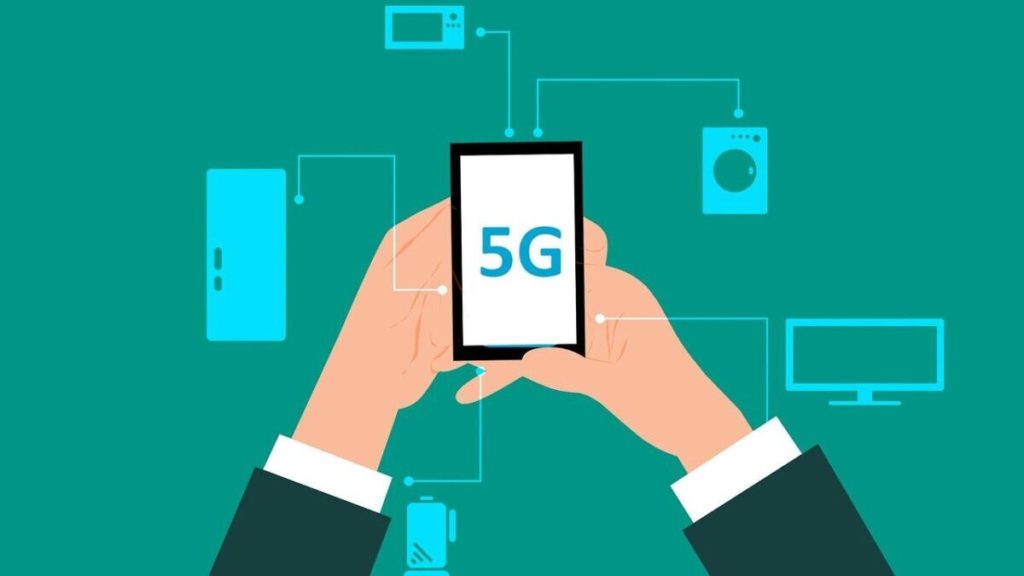The hype around 5G has not yet materialised: consumer uptake is slow, hindered by a lack of compatible phone models and operators are yet to finalise the roll-out of the technology that allows it, making coverage patchy at best.
And yet… its promise remains huge – with the eventual potential to transform every part of our lives from smart cities to virtual surgery and everything in between. For the consumer, faster speeds and much lower latency should allow a better experience, and for advertisers the chance to communicate in new and more nuanced ways.
During the opening keynote of this year’s virtual CES, Verizon CEO Hans Vestberg pronounced it “the platform that makes other innovations possible”.
The opportunity for advertisers is particularly exciting, according to AudienceQ’s CEO Grant Allaway. “The adoption of 5G should see options for marketers explode,” he says, though questions of the UK, particularly: “Will this growth be hampered by the [Coronavirus] pandemic, Brexit or the decision to ban Huawei from the UK mobile scene? Only time will tell.”
Time is something many in the industry believe is needed, with uptake likely to be lower than that of third and fourth generation mobile broadbands, fuelled in part by a lack of understanding of what 5G can do and unfounded fears of its safety.
A recent Deloitte Digital Consumer Trends report showed that just 43% of UK consumers were confident that 5G did not pose health risks. Almost two-thirds of the population surveyed said they did not know enough about 5G, rising to 74% of women, signalling that more must be done to educate wider society on the technology’s benefits.
Deloitte also notes that just 2% of smartphone owners are using 5G but that it was “likely that within 24 months the majority of phones, at all price levels, will support 5G”.
Conversely, it’s why now is a good time for marketers to consider their 5G futures, learn and experiment.
George Dixon, Head of Product and Strategy at location and audience targeting platform Mobsta says increased industry education is needed. “We’ve been showcasing and road-showing the potential of 5G for a couple of years,” he says. “In our lifetime and because of the internet we have seen the digital evolution leading to the Internet of Things (IoT). Now, we will see the shift – albeit slowly – of the digitalised ecosystem connecting not to fixed-line internet but a far more accessible and low latency data connection through 5G.”
In other words, it has the ability to fundamentally transform the way we connect to the internet, at home or on the move and to turn great swathes of inanimate objects into smart machines.
He continues: “Smart cities and self-driving cars become a reality because connectivity is near seamless. 5G isn’t just about the ability to access video content in 4K anywhere on a mobile device, it is about the convergence and evolution of the tools we use and interact with beyond really what we can imagine right now. Imagine a device with a folding screen that is 5G connected that can easily fit in your pocket but fold out to be as large as laptop or small TV.”
Charles Manning, founder and CEO of attribution analytics platform Kochava, agrees that 5G’s future lies far beyond the mobile phone. “The idea that 5G is being rolled out means every device looks more like a mobile device than it once was. In the past, we would get spun up on this concept of the IoT, and how it was going to take over but it requires [this] technology to make it happen.”
He cites a future of everything from fridges and freezers to cars, toothbrushes and more being internet-connected, meaning that in the future marketers will have to rethink how they identify an audience. “What’s interesting about having all these connected devices at home is that it will change the definition of audience and further outline who I am as a consumer,” he says. “While privacy will be key, you could still articulate the value of who I am. I could be in one segment for one thing or another for connectivity.”
According to Verified Market Research, the Global Internet of Things Market (IoT Market) Size was valued at USD 212.1 Billion in 2018 and is expected to witness a growth of 25.68% from 2019-2026 and reach USD 1,319.08 Billion by 2026.
Back to that speed and reduced latency – the time it takes for some data to get to its destination across the network, for advertisers and content creators this is a game-changer, allowing technologies such as augmented and virtual reality on the move and in your handset.
Unsurprisingly, the advertisers really pushing the envelope on the creative opportunities are the networks themselves. A recent EE campaign showcased a Rita Ora AR performance to demonstrate the real-time, next-gen capabilities of the Apple iPhone 12 Pro. “This one’s for you. Live over 5G,” the singer says, before being transformed into a larger-than-life AR avatar.
Mobile gaming is another area predicted to benefit from 5G technology, although Jonathan Harrop, AdColony Senior Director of Global Marketing and Communications, warns advertisers not to get too excited – yet.
“Despite a big push of cloud gaming in 2020, in 2021, games developed for mobile will continue to be the best source for … well games on mobile, even with 5G, and should be where advertisers continue to focus,” he says.
“5G will probably help quite a bit with Cloud adoption in terms of absolute market share increase, as latency has always been the main issue with cloud gaming, even on decent home wireless connections, but it’s still something many consumers fail to be in the market (or perhaps the right niche) for. Consumers like a clear picture of their options and cloud gaming has a hazy one at best,” Harrop adds.
Keeping a focus on what consumers want and need from their mobiles is something that Niall Moody, UK Trading Director at Nano Interactive. It is important not to lose the purpose of marketing amidst the hype. He says: “We would recommend marketers be cognisant of the way consumers use their mobile phones and be mindful of the relationships they have with devices. Ensure creatives are fit for purpose, engaging and not annoying. Build your brand and drive more sales by delivering your messages at moments of increased receptivity, tailoring your messaging to the need state of your consumers.”
When it comes to the future of mobile – and connectivity at large – it appears that marketers must balance the art of the possible now and next, using next-gen tools and technologies to deliver for business growth and consumer engagement.
As Dixon concludes: “Over the last few years, we have seen businesses grow and thrive enabled by smartphones and 4G connectivity,” citing brands such as Uber and Deliveroo that couldn’t exist without it. “The mind boggles at the potential of scaled 5G connectivity.”












